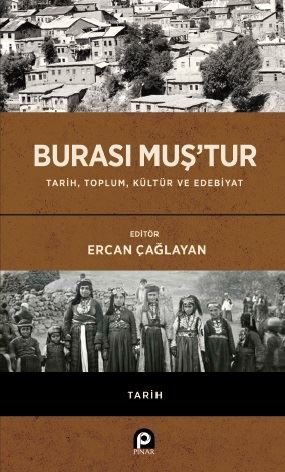
Burası Muş'tur
Mekân, insanoğlunun vazgeçilmez bir parçası olarak kuşatıcı ve var edici bir role sahiptir. Doğup büyüdüğü topraklarla arasında güçlü bağlar bulunan insanlar, daha sonraki zamanlarda farklı mekanlarla da yakınlık kurar. Şüphesiz herkesin bir şehri, bir memleketi; sevinçlerini ve acılarını yaşadığı yerler, özlem duyduğu diyarlar, ekmeğini yediği topraklar vardır. Yahut baskı ve acılar karşısında terk ettiği bir evi barkı, yıllarca dönemediği bir yurdu ve ruhunda bir yara olarak kalan “yersizliğin yurtsuzluğu” bulunmaktadır. Öyleyse Muş’a nereden bakmalı? Meşhur türküyü yakanın ağzından mı, yoksa gidenin dönmediği yerden mi? Uzun ve karlı geçen kıştan mı; bahar gelince gelinciklerle/lalelerle süslenen ovadan, coşan çamurlu Murat kıyısından mı; sisin bilinmezliklere sürüklediği “yokuş yoldan” mı?
Tüm bu sorular Muş özelinde insan ve şehir ilişkisine dair önemli karşılıklar barındırmaktadır elbette. Tabii ki bu ilişkinin duygusal boyutu dışında geçmişten bu yana vuku bulan kimi olaylar ile belirginlik kazanmış durumlar ve şehre dair bu minvalde pek çok kayıt bulunmaktadır. Hâsılı, başka coğrafyalarda/memleketlerde odluğu gibi, Muş’ta da insan ve mekân ilişkisi bağlamında pek çok cihetten izlere rastlamak mümkündür.
Ercan Çağlayan’ın derlediği “Burası Muş’tur”: Tarih, Toplum, Kültür ve Edebiyat isimli çalışma, Muş dolayımında tarihten edebiyata, iktisattan siyasete, eğitimden kültüre, etnik gruplardan milliyetçiliklere, müzikten mimariye, aşiret örgütlenmelerinden dengbêjlere ve en nihayetinde şehrin gündelik hayatındaki değişim dönüşümlerde üniversitenin, yerel, ulusal ve küresel rüzgarların etkilerine dek pek çok alanda, dün ile bugün arasındaki süreklilikleri ve kopuşları ortaya koymayı hedefliyor. Yanı sıra Muş’un akademide, ilim dünyasında ve kamuoyunda tanınması; öte taraftan Muş ve bölge hakkında yapılacak çalışmalarda mütevazı bir kaynak olarak addedilmesi temenni ediliyor.
(Tanıtım Bülteninden)
Hamur Tipi : 2. Hamur
Sayfa Sayısı : 400
Ebat : 13,5 x 21
İlk Baskı Yılı : 2020
Baskı Sayısı : 1. Basım
Dil : Türkçe
| Yayınevi | : | Pınar Yayıncılık |
| Sayfa Sayısı | : | 400 |
| Basım Yılı | : | 2020 |
| ISBN | : | 9789753525237 |
| Dil | : | Türkçe |


